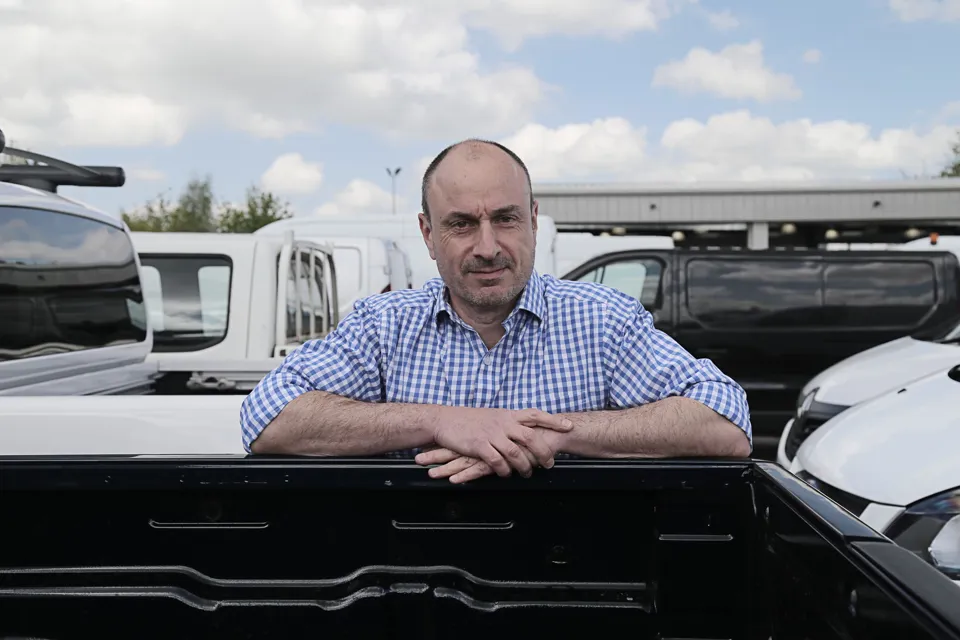By Andy Picton, chief commercial vehicle editor at Glass’s
The new light commercial vehicle (LCV) market grew by 31% in June, rounding off six consecutive months of growth.
The 34,630 units registered give a year-to-date total of 169,926 units, a 17.7% increase on the same point twelve months ago.
Registration performance in June was positive, with all sectors except Vans under 2.0t showing an improvement.
Pickups recorded a 40.8% increase, while Vans between 2.0 and 2.5 tonnes GVW and Vans between 2.5 and 3.5 tonne gross vehicle weight (GVW) sectors rose by 160.8% and 15.6% respectively.
The latter at 23,640 units accounting for 68.3% market share. Registrations in the Vans under 2.0t sector fell by 42.8% as operators opt for larger and more cost-efficient workhorses.
At the half-way point of the year, Ford hold all three podium positions with the Transit Custom leading the way, followed by the Transit and Ranger respectively.
Ford’s dominance continued in June, with the Transit Custom and Transit retaining first and second positions and Ranger placing in fifth.
The Stellantis Group saw the Vauxhall Vivaro finish in third spot, the Citroen Berlingo in sixth (1,595 units), Peugeot Partner eighth (1,420 units) and Vauxhall Combo tenth with 1,175 units registered.
The Renault Trafic claimed fourth spot, the Mercedes-Benz Sprinter secured seventh with 1,486 units and the Volkswagen Transporter finished ninth (1,325 units).
| Year-to-date 2023 | June 2023 | June 2022 |
|
Ford Transit Custom 21,972 |
Ford Transit Custom 4,737 |
Ford Transit Custom 3,707 |
| Ford Transit 14,189 | Ford Transit 3,404 | Ford Transit 3,531 |
| Ford Ranger 9,464 | Vauxhall Vivaro 1,921 | Vauxhall Vivaro 1,878 |
| Renault Trafic 8,773 | Renault Trafic 1,789 | Mercedes-Benz Sprinter 1,480 |
| Vauxhall Vivaro 8,719 | Ford Ranger 1,784 | Ford Ranger 1,319 |
Although June represents the sixth consecutive month of rising deliveries, only 1,775 battery electric vehicles were registered in June, a 11.9% decrease on twelve months ago.
Year-to-date, BEV registrations have reached 8,803 units, an 8.7% increase on June 2022 (8,100 units), but with a reduced market share of 5.2% (5.6% 2022).
Vauxhall continues to lead the electric LCV market and the Vauxhall Vivaro Electric remains the country’s best-selling electric van.
The Zero Emission Vehicle (ZEV) Mandate is launched next year forcing every manufacturer to build an increasing proportion of zero emission electric vehicles in the run up to 2030.
The LCV quota for 2024 is 10%, rising to 70% in 2030 and 100% by 2035. This will be a huge task for manufacturers, with urgent action needed to accelerate uptake, ahead of its implementation in just six months’ time.
This whilst at the same time, trying to overcome current deterrents such as unreliable vehicle range, a lack of suitable van sized charging bays and sky-high energy prices.
Euro 7 for new cars and vans

Also in the pipeline is the complex introduction of Euro 7 for new cars and commercial vehicles, due to come into force from July 2025.
The latest plans are to reduce further pollutants from both ICE and battery electric vehicles just at a time when resources are sorely needed for the research, development and engineering of new zero-emission vehicles and technologies.
The significant levels of research and investment needed to comply with the Euro 7 proposal deadlines risks slowing down the ambitious transition to zero-emission transport.
Used LCV market overview
With used supply returning and new vans being produced in increasing numbers, market cycles have returned to a level of normality.
A little respite is expected through the summer months, but volumes look likely to remain consistent.
With more volume and choice in the marketplace, buyers can be choosy. As a result, first time conversion rates were down in Q2.
Late year stock is still in short supply, whilst volumes in the small van sector have increased in Q2, resulting in some downward pressure on their values.
Sales of electric vans remain slow, with real-world performance and perceived lack of charging infrastructure the biggest current barriers to adoption.
June in detail
With an increased stock availability, so buyers have become increasingly choosy. Sales have remained strong but as a result of more volume in the marketplace, the average sales price has slipped by 4.84% during June and by 7% on June 2022.
The average age of vehicles sold during June increased slightly from 81.1 months to 81.9 months, with the average mileage of those vehicles decreasing by 0.6% to 82,899 miles. This is nearly 2,600 miles higher than 12 months ago.
As with previous months, the used medium van sector was the most popular. These models accounted for over 33% of all auction sales, whilst the volumes of 4x4 stock sold was the lowest (12.9%) but attracted the strongest average sales prices of £18,345, up nearly £4,850 on May.
Large vans covered more distance than any other model type at an average of 90,688 miles, a near 1,500-mile increase on May.
First-time conversion rates for June fell by 3.8% to 71.7% overall, but still remained 8.1% higher than at the same point 12 months ago. This decline was reflected across all sectors with the large panel van sector returning the best conversion rate of 72.7% (down 0.6% on May).
Meanwhile, 4x4 Pickups recorded a fall of 3.4% to 72%, medium vans 71.6% (down 4.3%) and small vans 71% (down 4.7%).
Used vehicles observed for sale in the wholesale market last month rose 1.1% to nearly 42,000 units. 50.5% of all vehicles on sale were valued at £20,000 or more, while 33% were on sale for between £20,000 and £10,000.
At the lower end of the market, those vehicles on sale in the £10,000 to £5,000 price bracket saw volumes increase to 12.1%, whilst those on sale for less than £5,000 also saw volumes increase to 4.4% of the overall market.



















Login to comment
Comments
No comments have been made yet.